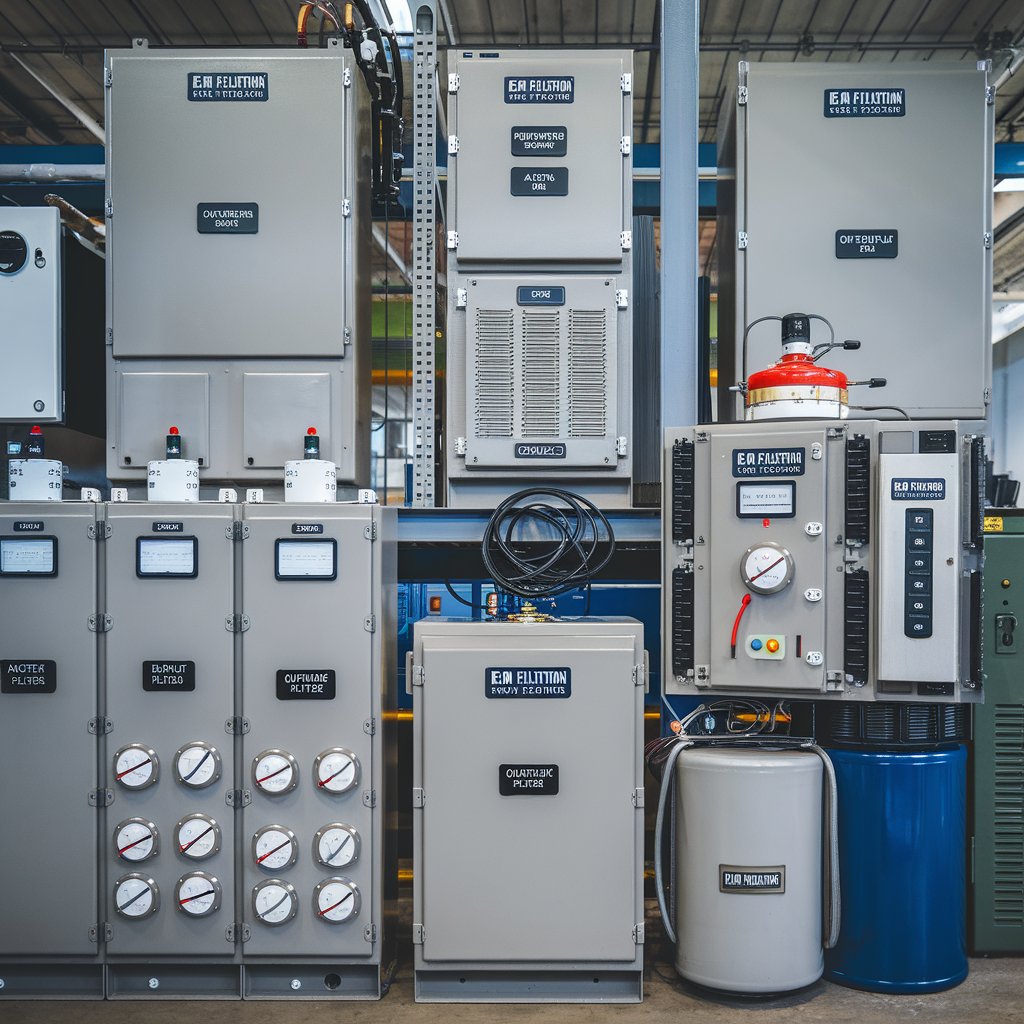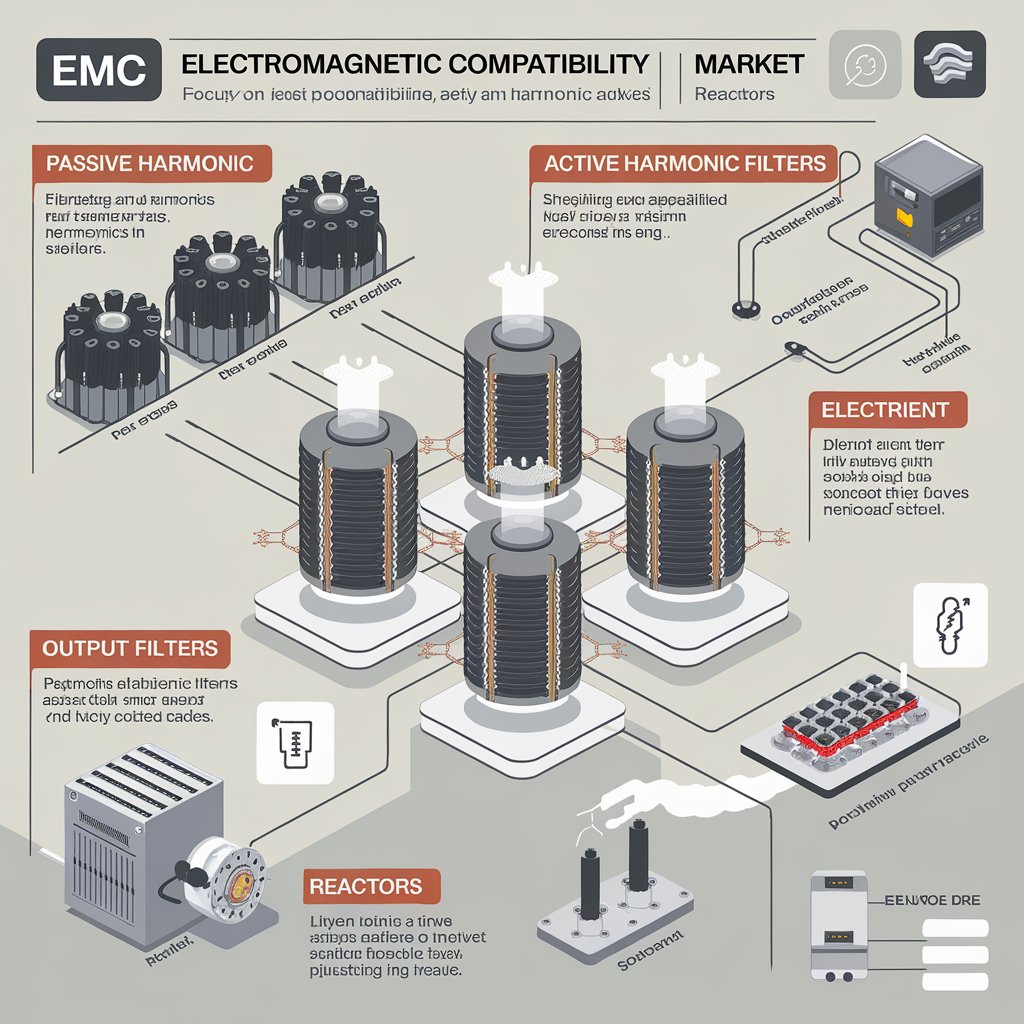As the digital transformation of industries accelerates across North America, ensuring electromagnetic compatibility (EMC) has become more critical than ever. EMC filters—used to suppress electromagnetic interference (EMI) in electronic systems—are essential to maintaining the reliability, safety, and performance of modern electronic devices and infrastructure. From electric vehicles (EVs) and medical devices to data centers and industrial automation, the demand for advanced EMC filtration is rising. This article provides a detailed overview of the North America EMC filtration market through 2025, exploring key growth drivers, major challenges, and the competitive landscape shaping this dynamic industry.
EMC filtration Market Overview
EMC Filtration Industry worth $1.59 billion by 2030, with a compound annual growth rate (CAGR) between 4.7%. This growth is being fueled by the region’s strong focus on innovation in sectors such as automotive electronics, telecommunications, healthcare, and industrial manufacturing. The increasing number of electronic devices per household, rising adoption of connected and wireless technologies, and tightening EMC regulations are pushing both OEMs and component suppliers to invest in high-performance filtering solutions.

EMC filtration Market Key Growth Drivers
Electrification of Automotive Systems
The rapid shift toward electric and autonomous vehicles has made EMC filtration a top priority for automakers. High-voltage systems such as electric drivetrains, onboard chargers, inverters, and battery management systems (BMS) are significant sources of EMI. To prevent these emissions from interfering with sensitive systems like GPS, radar, and infotainment, vehicle manufacturers are integrating automotive-grade EMC filters. North America, with strong EV adoption led by companies like Tesla, Rivian, and Ford, is a major growth zone for automotive EMC solutions.
Industrial Automation and Industry 4.0
The ongoing digitization of factories, also known as Industry 4.0, is increasing the use of electronic systems like sensors, programmable logic controllers (PLCs), and variable frequency drives (VFDs). These devices are prone to emitting or being affected by EMI. As a result, industrial OEMs are turning to EMC filters to protect mission-critical operations. The North American industrial sector—particularly in the U.S. and Canada—is investing in robust filtering systems to ensure uptime, productivity, and compliance with regulatory standards such as FCC Part 15 and IEC 61000.
Download PDF Brochure @ https://www.marketsandmarkets.com/pdfdownloadNew.asp?id=172300360
Medical Electronics and Regulatory Compliance
Medical devices are highly sensitive to EMI, which can cause serious malfunctions in critical applications. In North America, where the healthcare technology market is rapidly expanding, regulatory bodies such as the U.S. Food and Drug Administration (FDA) require all electronic medical devices to undergo rigorous EMC testing. Devices like MRI machines, ventilators, infusion pumps, and even portable wearables must meet IEC 60601-1-2 standards for electromagnetic immunity. This creates a stable, high-value market for EMC filter providers.
Growth in 5G and Telecom Infrastructure
The rollout of 5G and edge computing infrastructure is another significant driver for EMC filtration. Telecom equipment—ranging from base stations and antennas to routers and power amplifiers—requires reliable EMI suppression to ensure clean signal transmission and minimize cross-interference. As the U.S. and Canada aggressively build out 5G networks, the need for compact, high-frequency filters in telecom hardware is rising sharply, opening up new opportunities for filter manufacturers and integrators.
Technology and Product Trends
The EMC filtration inustry is witnessing rapid technological evolution. One key trend is the miniaturization of filters, enabling integration directly onto PCBs or within chip packages for space-constrained designs such as wearables and IoT devices. Another trend is the development of hybrid filters, which combine EMI suppression with surge protection and thermal management—ideal for environments like EV charging stations and high-frequency industrial equipment. Vendors are also exploring digitally tunable filters that adjust performance in real-time based on EMI levels, offering a new level of system intelligence.

Key Market Challenges
Despite robust demand, the EMC filtration industry faces several hurdles. One major challenge is the growing complexity of modern electronic systems. Devices that operate across multiple frequency bands (e.g., Bluetooth, Wi-Fi, 5G) create interference scenarios that are harder to suppress using traditional passive filters. Another issue is cost sensitivity. OEMs want high-performance filters that don’t add to bill-of-material (BoM) costs or occupy valuable board space, especially in consumer and automotive electronics.
Supply chain volatility remains a critical concern, particularly for key materials like ferrites and capacitors used in filter assemblies. Post-pandemic disruptions and geopolitical tensions have strained availability, leading manufacturers to explore nearshoring and dual sourcing strategies. Additionally, environmental compliance regulations such as RoHS and REACH are compelling manufacturers to redesign filters using non-toxic materials and more sustainable production processes.
EMC filtration companies such as
- ETS-Lindgren (US)
- MTE Corporation (US)
are also making strides by focusing on custom solutions, high-reliability filters, and faster EMC compliance testing.
Market Outlook Through 2025
As the number of electronics per device continues to grow, and as new applications emerge in smart cities, connected homes, and autonomous transportation, the role of EMC filtration will expand beyond traditional use cases. By 2025, North America’s EMC filtration market will not only grow in size but also in complexity, demanding more customized, software-driven, and integrated solutions.
In addition to innovation in filter hardware, the use of simulation tools and AI-driven EMC testing platforms is likely to rise, enabling design teams to predict interference patterns and validate compliance early in the product lifecycle. There is also an expected shift toward standardization and open platforms, especially as enterprises deploy mixed-vendor environments across their electronics infrastructure.
Final Thoughts
EMC filtration is becoming a strategic priority in product design, not just a regulatory checkbox. As North America advances in sectors like EVs, smart manufacturing, medical tech, and 5G, the importance of clean, interference-free electronics will only increase. Manufacturers that invest early in robust EMC design, select the right filtering partners, and align with evolving standards will be best positioned to lead in this increasingly competitive and electrified landscape.